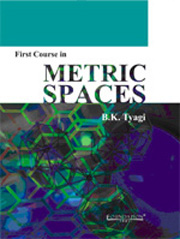Book contents
- Frontmatter
- Preface
- Contents
- 1 Preliminaries
- 2 Basic Concepts in Metric Spaces
- 3 Sequences in Metric Spaces
- 4 Limits and Continuity
- 5 Completeness
- 6 Compactness
- 7 Connectedness
- 8 Approximations
- 9 Fixed Point Theorems and Their Applications
- 10 A Construction of Real Number System
- Appendix A Definition of Sets as Cumulative Type Structures
- Appendix B Bibliography
- Index
Preface
Published online by Cambridge University Press: 05 April 2012
- Frontmatter
- Preface
- Contents
- 1 Preliminaries
- 2 Basic Concepts in Metric Spaces
- 3 Sequences in Metric Spaces
- 4 Limits and Continuity
- 5 Completeness
- 6 Compactness
- 7 Connectedness
- 8 Approximations
- 9 Fixed Point Theorems and Their Applications
- 10 A Construction of Real Number System
- Appendix A Definition of Sets as Cumulative Type Structures
- Appendix B Bibliography
- Index
Summary
Real analysis is the branch of mathematical analysis which is primarily concerned with limit processes and continuity of real valued functions defined on the subsets of the real line. The considerations of these notions have led mathematicians to generalise these in various ways, for example, to study the convergence of sequences of real or complex numbers, the continuity of complex valued functions defined over the domains of complex numbers, etc. The reader who has done a course of real analysis must have noted that these concepts of limit, continuity of a function and convergence of sequence depend for their meaning on the notion of the absolute value of the difference of two numbers when they are regarded as the points on the real line, which is nothing but the distance between the points. It is no exaggeration if one says that the notion of distance permeates everywhere in the entire course of real analysis and also in geometry.
When the above notion of distance (or metric) for real numbers is extended to abstract sets in general, then the resulting mathematical structures are known as metric spaces. The metric spaces were first introduced by Maurice Fréchet in his thesis for doctorate in mathematics in 1906 and are being investigated since then. The metric spaces provide an appropriate setting to study ‘closeness’ of objects by defining a distance between them. This notion of distance captures the semantics of the real life usage of the meaning of the word ‘distance’.
Information
- Type
- Chapter
- Information
- First Course in Metric Spaces , pp. v - viiiPublisher: Foundation BooksPrint publication year: 2010
